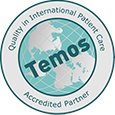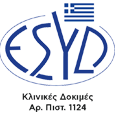The Cerebrovascular Department treats patients presenting all types of cerebrovascular diseases.
Our Department comprises physicians with international specialization credentials (specifically, from the United States) in the treatment of all cerebrovascular diseases. The Department is staffed with neurologists (vascular neurologists), neurosurgeons (cerebrovascular/ endovascular neurosurgeons) and interventional radiologists with vast experience in the treatment of vascular strokes. This coordinated cooperation of our team of excellently trained and experienced specialists from a varieties of specialties (the multidisciplinary team) constitutes a guarantee for the fullest possible treatment of patients suffering from brain vascular diseases. Our team is on-duty 24/7 to provide the best possible treatment to every vascular stroke patient.
Severe Ischemic Vascular Stroke
The most frequent condition we treat on a daily basis is the ischemic vascular stroke. It should be stressed that the earliest a patient suffering severe vascular stroke is rushed to the hospital, the best chances this patient has for a favorable outcome.
Our Department treats severe ischemic vascular stroke patients in two ways:
- Thrombolysis: In this procedure a special IV medicine is administered which dissolves the vein-blocking thrombus that caused the ischemic vascular stroke.
- Thrombectomy: In this procedure the thrombus is mechanically removed by means of intraluminal intervention.
Our ischemic vascular stroke treatment protocols are in agreement with the most recent guidelines set by the American Heart Association (AHA) and the American Stroke Association (ASA).
In particular, as soon as she/he proceeds to the hospital, the patient is examined by the Department’s neurologist, who confirms whether the case presented is actually an ischemic vascular stroke. Then the necessary imaging controls are immediately conducted. The patient is then treated (provided the patient fulfills the necessary criteria and lacks any counter-indications) through thrombolysis, thrombectomy or a combination of the above. Any patient not fulfilling such criteria or presenting any counter-indications shall be managed conservatively.
As soon as the treatment is complete and the patient stabilized, new controls are performed in order to ascertain the etiology of the severe ischemic vascular stroke, so as to prevent any onset of a new stroke through appropriate medicinal treatment.
Hemorrhagic Cerebrovascular Strokes
Additionally, the Department treats patients presenting hemorrhagic cerebrovascular stroke. In case of an intracerebral hemorrhage the treatment is typically conservative aiming at hypertension control (a usual coexisting condition) and the exploration into the etiology in order to prevent another stroke from happening. In select cases the patient is directed to the surgery room for hematoma removal by a neurosurgeon specialized in such cerebrovascular diseases. In case the hemorrhage is due to an arteriovenous malformation of the brain, the indicated treatment shall be decided on a case-by-case basis that may include open surgical removal, embolization or radiotherapy.
In case of a subarachnoid hemorrhage, the cause is usually a rupture of a brain aneurysm. Treatment in such a case is conducted usually through embolization by an interventional neuroradiologist. In rare occasions, surgical intervention is chosen for the treatment of aneurysms through open surgery (clipping) by a neurosurgeon.
Chronic Cerebral Ischemia
The Department also treats incidents associated with periodic ischemic strokes and ischemic cerebrovascular strokes on a chronic basis (ischemic or hemorrhagic), initially aiming at determining the etiology and the dispensation of the best possible pharmaceutical treatment (as a prevention against any new strokes) Patient monitoring is on a long-term basis and includes the best possible control of risk factors (common to all cardiovascular diseases).
In case of confirmation of any severe carotid stenosis, the treatment may be conducted through neurological intervention with stent placement or surgically through endarteroectomy. In rare occasions stenoses of the basilar or spinal arteries may be treated through a neurological intervention.
Other less frequent cerebrovascular diseases treated at our Department include:
- Venous thromboses
- Vasculitis
- Separation of extracranial veins (carotid and spinal) and intracranial veins (carotid, spinal, middle cerebral and basilar veins)
- Moyamoya disease (through reperfusion operations)
- Brain and spinal tumor embolizations.
- Arteriovenous communications (dural arteriovenous fistula) of the brain and the spinal cord.
Staff
Chief:
Konstantinos Takis, Neurologist
Co-Chief:
Christos Gkogkas, Interventional Neuroradiologist
Assistant:
Αnastasios Lavdas, Neurologist
Associates:
Κοnstantinos Lagios, Interventional Radiologist
Contact number +30 210 650 2061










































